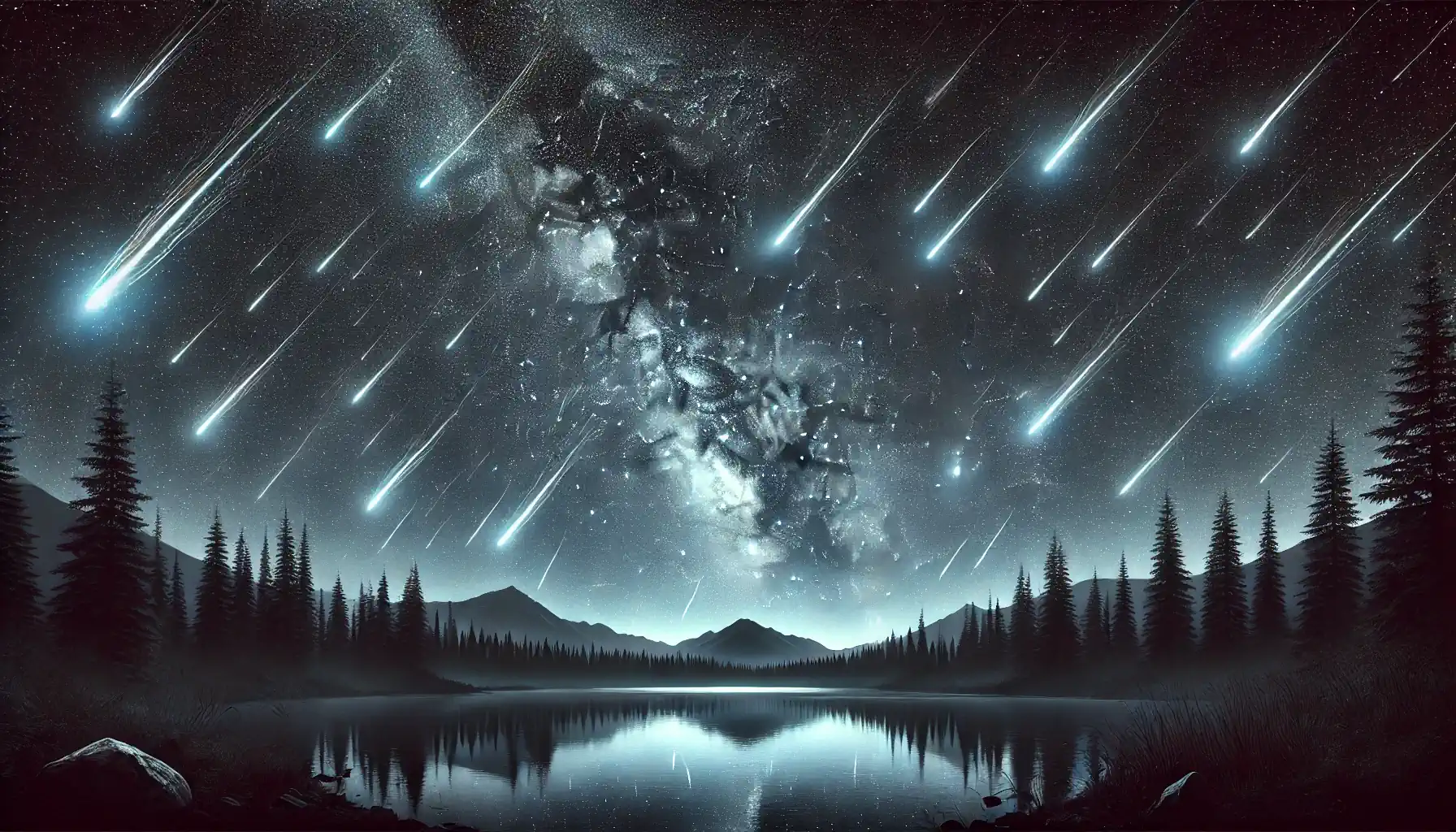
Best viewed: 21-22nd October 2022
What happens when the Earth crashes into debris left behind by Comet Halley? We get the Orionid meteor shower, of course!
What is the Orionid meteor shower?
- Every year, the Earth goes once around the Sun. And every October, the Earth crashes into a cloud of debris left behind by Comet Halley. As the debris burns up in the Earth’s atmosphere, it produces the meteor shower that we call the Orionids.
- At its peak, the Orionids can produce 25 meteors per hour. They’re usually fast with fine trails and there’s always a chance of seeing one that becomes a fireball.
When is the best time to see the Orionid meteor shower in 2022?
- The best time to see the Orionids in 2022 is between midnight and dawn on Saturday 22nd October.
- Viewing conditions will be good this year, with relatively little moonlight. Dark, clear skies are always best for seeing meteors.
- However, the Orionids will start appearing from 2nd October, so keep your eyes peeled. The number of meteors will increase steadily each night until their peak on 21-22nd October and then decrease before finishing completely by 7th November.
How to View the Orionid Meteor Shower from the UK
No special equipment is needed to see the Orionid meteor shower from the UK, but a bit of preparation helps.
- Check the Weather: Look at the forecast. If cloudy, try watching on nights before the peak.
- Choose a Dark Location: Find a safe, dark spot with a clear, unobstructed view of the sky, away from buildings, trees, and lights. The more sky you can see, the better.
- Adjust Your Eyes: Turn off all lights, including phones and torches, for 15 minutes to let your eyes adjust to the darkness. Use a red filter on your torch if necessary.
- Stay Comfortable: Dress warmly and bring a reclining chair. Since the Orionids can be viewed for many hours, refreshments can make the experience more enjoyable.
If you are planning to take pictures of meteors, Mary McIntyre has some very useful tips for you on how to take better meteor pictures.
Another great way to watch the Perseids is to buy or build yourself a meteor camera. You’ll be able to create amazing time lapse videos like the one below and join the UK network of over 175 meteor cameras. You don’t need any previous experience and it’s a great project to do with your kids or students!
Fun facts about the Orionid meteor shower
- They’re called the Orionids because the meteors seem to come from the constellation of Orion. However, they’re actually caused by the Earth crashing into debris left behind by Comet Halley.
- The Orionid meteors we see today separated from Comet Halley hundreds of years ago. The current orbit of Comet Halley doesn’t pass close enough to the Earth to produce meteors.
- The average speed for an Orion meteor is 41 miles per second (that’s 147,600 miles per hour!). The air in front of the meteor is squashed and heated to thousands of degrees Celsius. The smaller meteors vaporise and leave behind a bright trail but larger meteors can explode as fireballs.